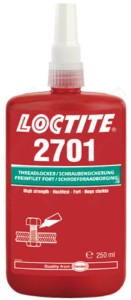 Search
Search
 Producers
Producers
 Login
Login
Mobilgrease 28 aynthetic aerospace grease extreme conditions, oxidation, thermal stability, anti-wear, material compatibility
 Description
Description
Mobilgrease 28synthetic dedicated to the aviation industry, which is characterized by unique properties and a wide range of applications. Its reliability and durability make it widely used by airlines, aircraft manufacturers, and others in the aerospace industry to provide long-term reliable mechanical performance and protection against corrosion and wear.
Properties:
- Wide temperature range: Due to its synthetic base, Mobilgrease 28 has exceptional thermal stability and can withstand both very low and very high temperatures.
- Oxidation Resistance: Mobilgrease 28 exhibits excellent oxidation resistance, resulting in long-term lubrication and corrosion protection.
- Excellent anti-wear properties: Mobilgrease 28 effectively reduces surface friction resulting in less wear and longer mechanical component life.
- Structuring capacity: Mobilgrease 28 has an excellent ability to withstand heavy loads, which is especially important in aviation.
- Water and Moisture Resistant: Mobilgrease 28 has a high resistance to water washout, resulting in improved corrosion protection.
- Material Compatibility: Mobilgrease 28 is compatible with a wide range of aerospace materials including metals, plastics and gaskets.
Usage:
- Engines: Mobilgrease 28 can be used to lubricate jet engines, reciprocating engines, reducers, air compressors, bearings and other moving parts.
- Undercarriage: Mobilgrease 28 is used to lubricate undercarriage components such as suspension, wheels, brakes and steering mechanisms.
- Hydraulic systems: Mobilgrease 28 can be used in aircraft hydraulic systems such as wing mechanisms, flaps and ailerons.
- Control Systems: Mobilgrease 28 is used to lubricate flight control components such as gears, bearings and other moving parts.
- Transmission: Mobilgrease 28 is used in gearboxes, bearings and other transmission components such as shafts, clutches and propeller gearboxes in helicopters
- Gear Lubrication: Mobilgrease 28 is used to lubricate main and auxiliary gears, especially in helicopters where they are critical to the proper operation of the rotating mechanisms.
- Passenger compartment components: Mobilgrease 28 is used to lubricate hinges, seat rails, door mechanisms and other moving components inside the passenger compartment.
- Onboard Lubrication Systems: Mobilgrease 28 is used in onboard lubrication systems that automatically lubricate critical aircraft components during flight to ensure proper operation and long component life.
- Antenna and Radar Lubrication: Mobilgrease 28 is used to lubricate antennas, radars and other aircraft communications equipment that require proper operation and corrosion protection.
- Corrosion protection: Mobilgrease 28 also has a protective role, preventing corrosion of mechanical and metal components that are exposed to moisture, salt and other aggressive environmental factors.
Parameters:
|
Product Specifications |
|
|---|---|
| Consistency class |
1.5 |
|
Base oil viscosity at 100°C |
5.7 |
|
Base oil viscosity at 40°C |
29.3 |
|
Color |
Dark red |
|
Drop point |
307 |
|
Working Penetration |
293 |
| Texture |
Hungry, buttery |
|
Capacity |
16kg, 4x2kg |
Storage:
How lubricants, including aviation lubricants such as Mobilgrease 28 and Mobilgrease 33, are stored is critical to maintaining their properties and ensuring long-term performance. By following these guidelines, you will be able to properly store lubricants, maintain their properties, and ensure their safety effective and safe use in aerospace and other sectors.
- Storage at the right temperature: Lubricants should not be stored in areas subject to extreme temperatures, either high or low. The optimum storage temperature should be between 0°C and 40°C.
- Moisture protection: When storing lubricants, protect them from moisture, which can affect their performance. Whenever possible, store lubricants in closed, humidity-controlled rooms.
- Appropriate packaging: Lubricants should be stored in original, tightly closed containers that provide protection against contamination, moisture and other external factors.
- Vertical storage: If possible, store grease drums vertically, with the cap on top to avoid product leakage and minimize the risk of contamination.
- Inventory rotation: Use the first-in-first-out (FIFO) principle to ensure that older lubricant inventories are used before newer ones. Regularly check product expiration dates to avoid using past-use lubricants.
- Warehouse cleanliness: Keep your storage areas clean to avoid contaminating your lubricants with dust, mud, sand or other external agents.
- Labeling: Make sure all lubricant containers are properly labeled to avoid confusion and misuse.
- Compliance: For aviation lubricants such as Mobilgrease 28 and Mobilgrease 33, all regulations and requirements for the storage and transportation of such products must be followed to ensure their safety and effectiveness.
- Checking the tightness of packaging: Regularly check lubricant containers for damage or leaks. If any irregularities are found, transfer the grease to a new sealed package to avoid contamination.
- Employee training: Ensure that those responsible for the storage and handling of lubricants are properly trained and aware of the storage and safe use of these products.
- Storage by lubricant type: Whenever possible, store aviation lubricants separately from other lubricant types to avoid confusion and material incompatibility hazards.
- Technical Data Sheet Availability: Make sure that the Technical Data Sheets (SDS) for each type of lubricant are readily available in the warehouse so employees can quickly check the product's safety, properties and application information.
- Adequate warehouse equipment: Equip your warehouse with appropriate shelves, platforms or pallets that will enable safe and efficient storage of lubricants. Adjust the warehouse equipment to the specificity of the stored products.
- Ensure adequate ventilation: The storage of lubricants requires adequate ventilation to avoid the accumulation of vapors that may be harmful to the health of employees or the environment.
- Development of emergency procedures: In the event of spills or other emergencies, develop appropriate procedures that will allow you to quickly contain lubricants and minimize the risk of negative impact on the environment and safety of employees.

 Loctite Henkel Premium Partner
Loctite Henkel Premium Partner Free delivery from 600 EURO to EU Countries*
Free delivery from 600 EURO to EU Countries*  33 851 46 01
33 851 46 01





















